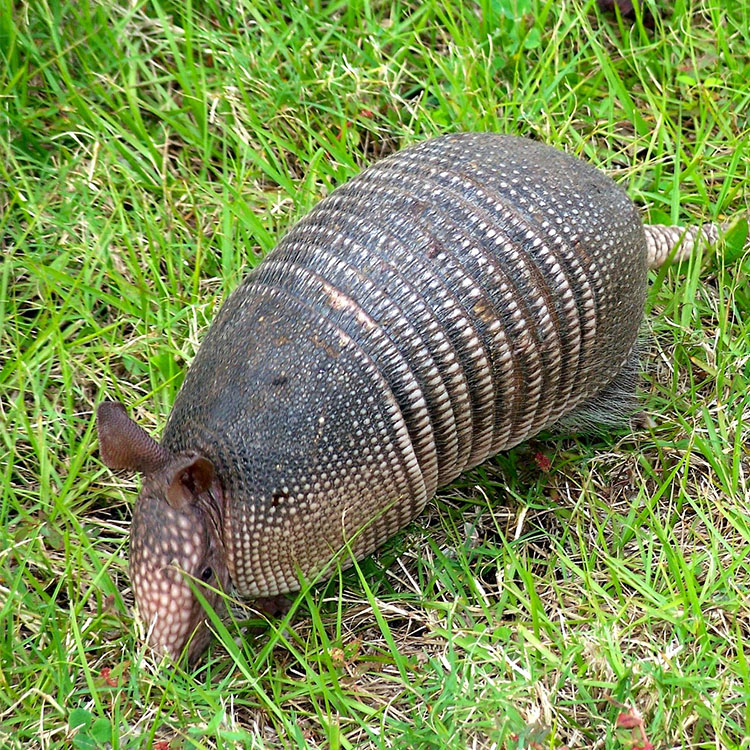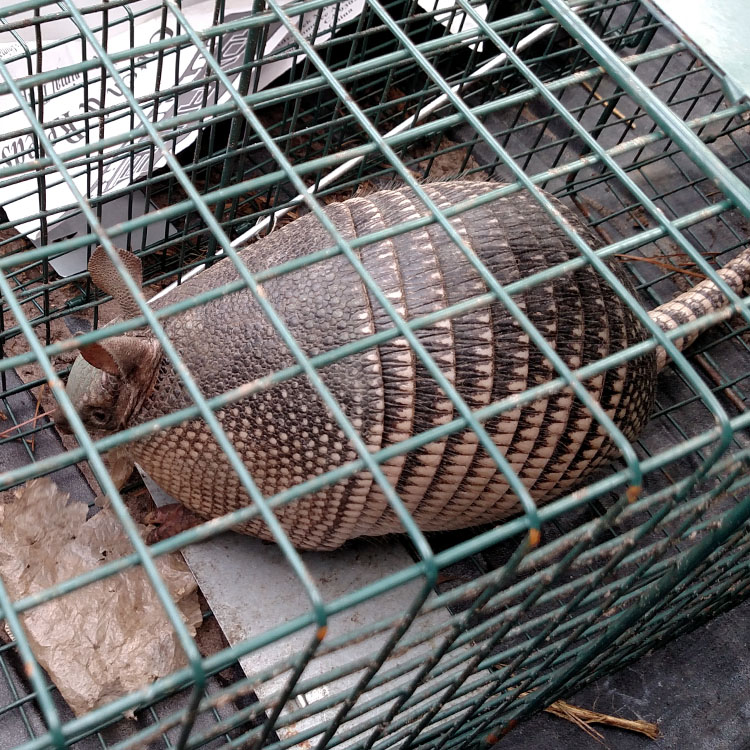Armadillo Trapping & Removal
In this Article
Armadillo Inspection
Armadillos are usually found alone and not in groups. They have a scaly armor around their bodies, a tail, and a small head and snout. The most common kind is the Nine-Banded Armadillo. If you want to know how to get rid of armadillos, read the articles in our amarmadillo knowledgebase for tips on trapping, removal, and exclusion.

Armadillo Dangers
It is wise to be cautious around armadillos and similar outdoor animals. If you've heard of urban legends about armadillos and want to know, do armadillos carry leprosy?–the answer is yes. Specifically, the common nine-banded armadillo is the culprit for carrying this disease in many states in the southern part of the U.S.A.
Trapping armadillos
Most wildlife can be trapped and relocated in the United States if it is classified as nuisance wildlife. However, special permits may be required, as well as strict regulations regardign the times of the year this can be done, as well as the types of traps being used. Refer to local Fish and Wildlife representatives for up to date legal codes, and local law enforcement for the use of firearms for killing armadillos. It may also be illegal to kill armadillos with poison in your area, so make sure that you are not committing a crime before you attempt trapping or extermination of armadillos.

DIY Armadillo Removal
Start your armadillo removal with some research about armadillos. It helps to know what type of food they eat, what they look like, and what makes them want to enter your yard before you star trying to trap and remove them. Then proceed with an inspection of your property and fenceline. Some work will be required once you have done a solid investigation of the property to repair damaged fence, fill in holes, and to put your garden back together. If you want to keep armadillos away, you'll need to do more than simply trap the armadillo and move on.
How to Inspect for Armadillos
Look for armadillo-sized holes dug into the turf or soft exposed soil on your property. Look for droppings that don't belong to a household pet. Make sure that if you get near an armadillo that you don't come into contact with it. While they are known to carry the virus that causes leprosy, they are also able to carry other wildlife bacteria and rabies.

Trapping Armadillos
There are several methods for trapping armadillos. The most common is using a live bait trap so that no harm comes to the animal and it can be safely relocated by a permitted wildlife removal specialist.
Armadillo Repellent
One of the most bothersome things for professionals in the field of wildlife removal is chemicals that are sold in home improvement warehouse stores that claim to solve all of a consumer's wildlife problems in their yard and home. We find that for nearly all cases, products like armadillo repellent are innefectual and do not solve the root of the problem.
